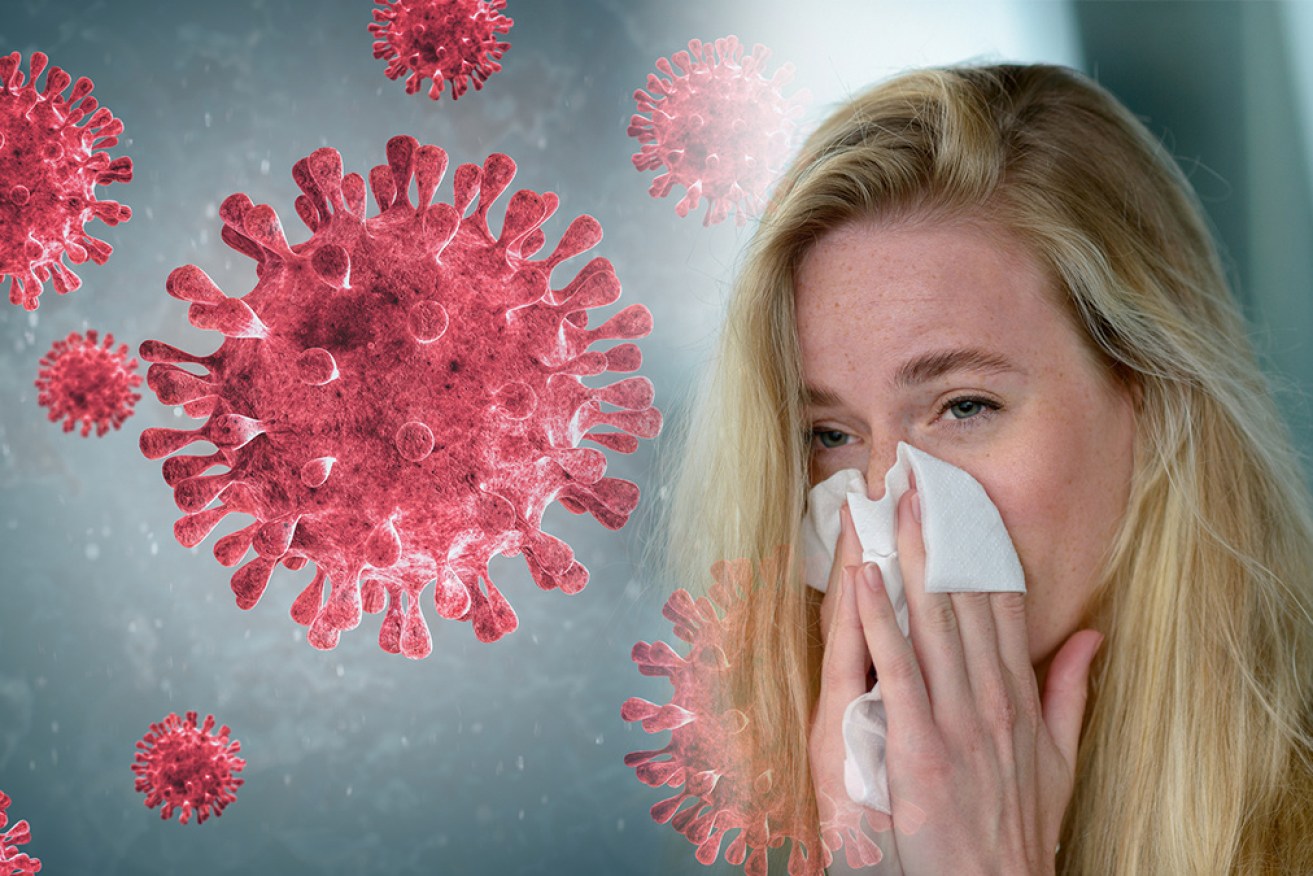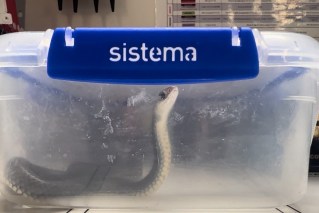The thorny problem of deciding if you’ve caught coronavirus or ‘just’ the flu


The list of symptoms associated with coronavirus continue to grow.
As Australia enters winter and flu season gears up, every sniffle will be like a game of Russian roulette – is it influenza, a bad cold or COVID-19?
Aches and pains, a sore throat, a dry cough. They are common symptoms of both illnesses, and as Australia has a limited number of coronavirus test kits, the cause can be hard to pin down.
But COVID-19 isn’t ‘just the flu’. On Wednesday, research published in the medical journal The Lancet Infectious Diseases revealed the new coronavirus is far less deadly than we first thought, but still far higher than influenza.
COVID-19 kills 0.66 per cent of those infected, much higher than the 0.1 per cent of people who are killed by the flu each year.
If undetected cases are not taken into account, the COVID-19 death rate sits at 1.38 per cent, a number more consistent with earlier reports that it killed 2 per cent of those who caught it, the study found.
“Estimating the case fatality ratio for COVID-19 in real-time during its epidemic is very challenging,” Shigui Ruan, a professor in the department of mathematics at The University of Miami wrote in an accompanying commentary.

The coronavirus is not as deadly as we first thought. Photo: AAP
Even though the fatality rate is low for younger people, it is clear that any suggestion of COVID-19 being just like influenza is false.
We know about the flu and how typical symptoms include fever and aches, and that it comes on quickly. But doctors are still trying to understand the full picture of COVID-19, as the severity of symptoms can vary wildly.
One patient can present with just a cough and mild fever, the next in critical condition, said Professor Nikolai Petrovsky from the College of Medicine and Public Health at Flinders University.
“Chinese studies showed that 50 per cent of infected people had no symptoms at all – this was particularly true for younger people,” Professor Petrovsky said.
“Of all those who get infected, 80 per cent will have no or mild symptoms. Of the remaining 20 per cent who require hospital care about one in five may end up in ICU.”
But how do you tell the difference?
Essentially, it is impossible without a test.
“These viruses have completely overlapping symptoms,” said Professor Petrovsky.
“If in doubt, the only way is to run a diagnostic test on the throat or nasal swab.
“Loss of smell has been described as an early symptom of COVID-19, so this may provide a clue. But the loss of smell is also common due to common cold or flu.”
The limited number of test kits available means we are testing only those likely to have the coronavirus, Monash University professor of medicine Paul Komesaroff said.
“At the present time, testing is restricted. Too restricted, but they’re trying to ration the availability of tests because of the early rush on them,” he said.
“That test doesn’t tell you if you’re going to be infected tomorrow. There was a lot of wasted resources.
“What they did is strictly limit the test to those criteria.”
The overlap of symptoms raises a difficult question for those with a bad cough, or a slight fever. If you have symptoms, should you self isolate to help flatten the curve?
“The questions is, what’s the safe thing to do here?” said Professor Komesaroff.
“You can’t have a situation where everyone isolates for two weeks when they get the most innocent of colds.
“According to the current guidelines, if you’re not in a high risk or suspicious group, you wait for 24 hours and then you can consider yourself no longer infectious.
“But that comes from the experience with influenza. It’s not particularly evidence-based.”
Australian doctors should be able to test outside the criteria if a patient had suitable symptoms, Professor Komesaroff said.
“There should be provision for a GP or others to be able to say ‘let’s do the test now’,” he said.
“Even if this person doesn’t fall between that narrow criteria; that’s a significant limitation.”









